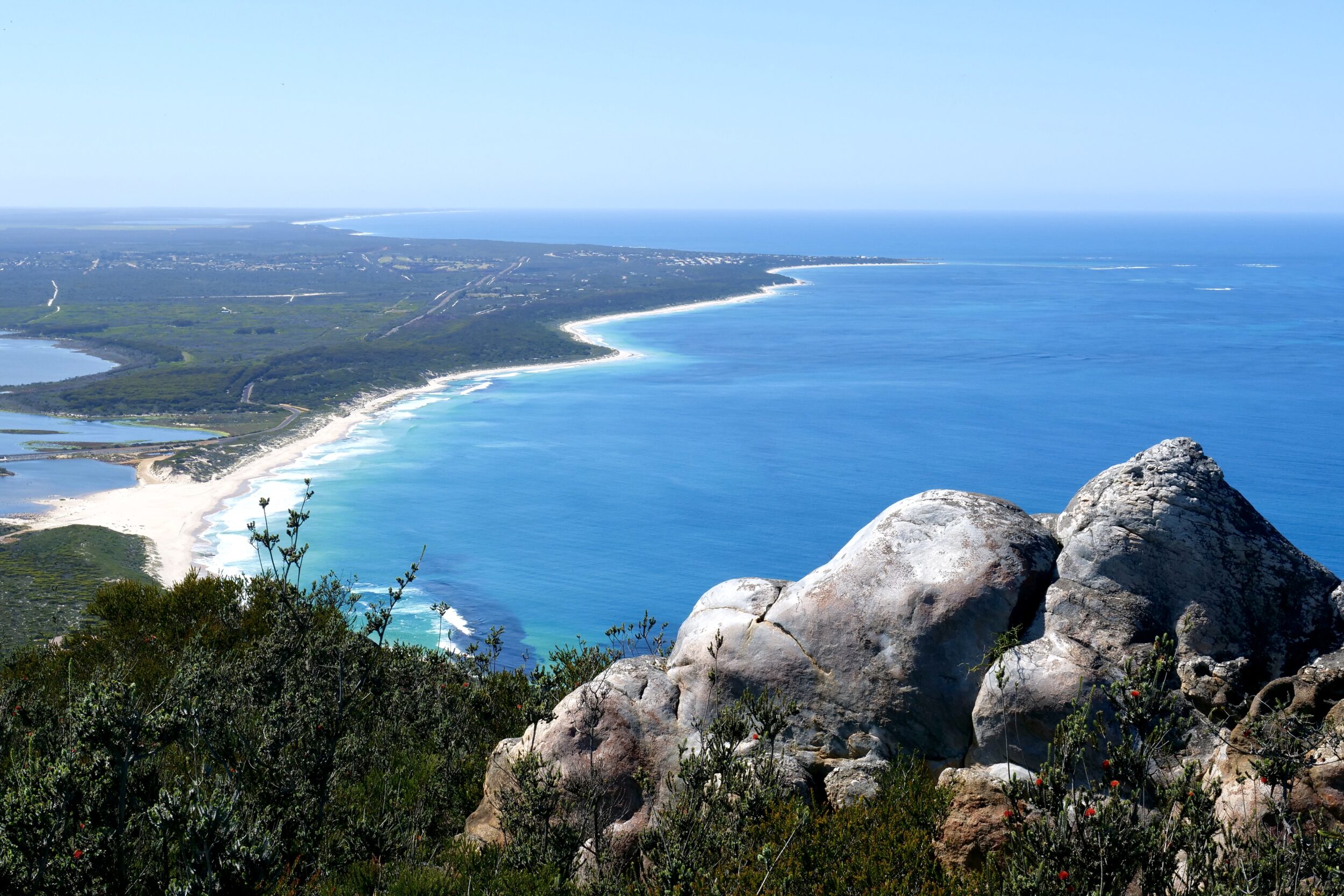Q: what do the mostly-grey, stark rocks atop East Mt Barren have in common with the mostly-white sands that are a feature of so many beaches on Western Australia’s south coast?
A: both are composed almost entirely of the second most abundant mineral in the earth’s crust, namely….
…quartz.
(#1 is feldspar)
Quartz is a hard, crystalline form of silica.
Silica is the usual form of silicon dioxide, which is a compound of oxygen and silicon – the two most common elements in the earth’s crust.
Together, oxygen and silicon comprise nearly two thirds of the earth’s crust. (by weight)
The rocky top of East Mount Barren is quartzite.
Quartzite is formed – by heating and pressure – from what was originally quartz sandstone.
The sand on the beach below is mostly a collection of quartz particles that became grains of sand via the weathering of rock; the sand grains are still crystalline.
Wind and water are the great shifters of sands.
Sand derives from rock. The reverse is also true, when one is talking of sandstone.
East Mount Barren is near the eastern boundary of Fitzgerald River National Park.
Clearly visible in the photo – just a few kilometres east of my vantage point, at 10.35 am on 21 September 2021 – is Hopetoun.
In order to see the next coastal town, east of Hopetoun, one would have to be an orbiting astronaut.
Esperance is 160 kilometres away…more than 190 kilometres, by road. (most of this coastline has no road running along it)
This next chapter’s vantage point is also atop East Mount Barren, but we’ll be looking in the opposite direction.
